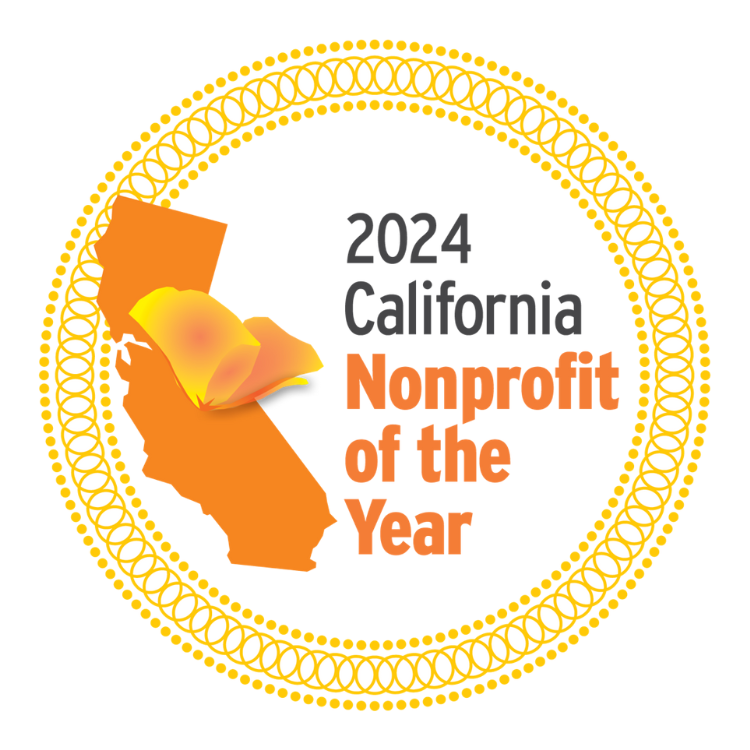Over the past few months, the Santa Ana River Mouth has been introduced to a wide array of changes, including a dredging project and seasonal bird migration. We’ve closely followed everything impacting this area through our Santa Ana River Mouth Monitoring Project. Keep reading to get a comprehensive update on what’s been happening at the river mouth!
About the River Mouth
The Santa Ana River drains the largest watershed basin in Southern California (over 2,650 square miles). The 96-mile river ends in Orange County between Newport Beach and Huntington Beach at the Santa Ana River Mouth. This area is a hotspot for human recreation, especially for dog owners looking to bring their pups to the ocean.
However, bringing dogs to the river mouth is a recipe for disaster. Despite the sandbars creating the illusion of safety by breaking up the surf, the river mouth has unpredictable currents and water quality. Dogs at the river mouth also pose a major threat to the area’s shorebirds and larger ecosystem.
We started the Santa Ana River Mouth Monitoring Project to research how human recreation impacts this vital coastal area and educate beachgoers on how to recreate responsibly. Check out this webpage to learn more about this program, its impact, and how you can help!
Dredging Project
If you’ve visited the river mouth recently, you may have noticed that there was caution tape and construction vehicles covering the beach. This was due to a dredging project by the Orange County Flood Control District (Flood Control) to remove debris from the Santa Ana River channel and reduce flooding. The dredging project started on October 16 is still ongoing despite its expected completion in late November.
Flood Control recently appealed to the California State Lands Commission to approve this project for a 5-year lease. Click here to read the full staff report prepared by the Commission. Within their 5-year lease, Flood Control announced that they would improve enforcement of dog activity restrictions at the river mouth.
Our surveys show Flood Control has rarely interfered or even interacted with dog owners who are breaking the law. Our team, alongside other coastal advocates, insisted that Flood Control acquire third-party law enforcement since their staff has been inefficient, but the request was denied. Recent surveys conducted during the dredging project show no signs of improved enforcement. The photos below were taken before and during the dredging project.
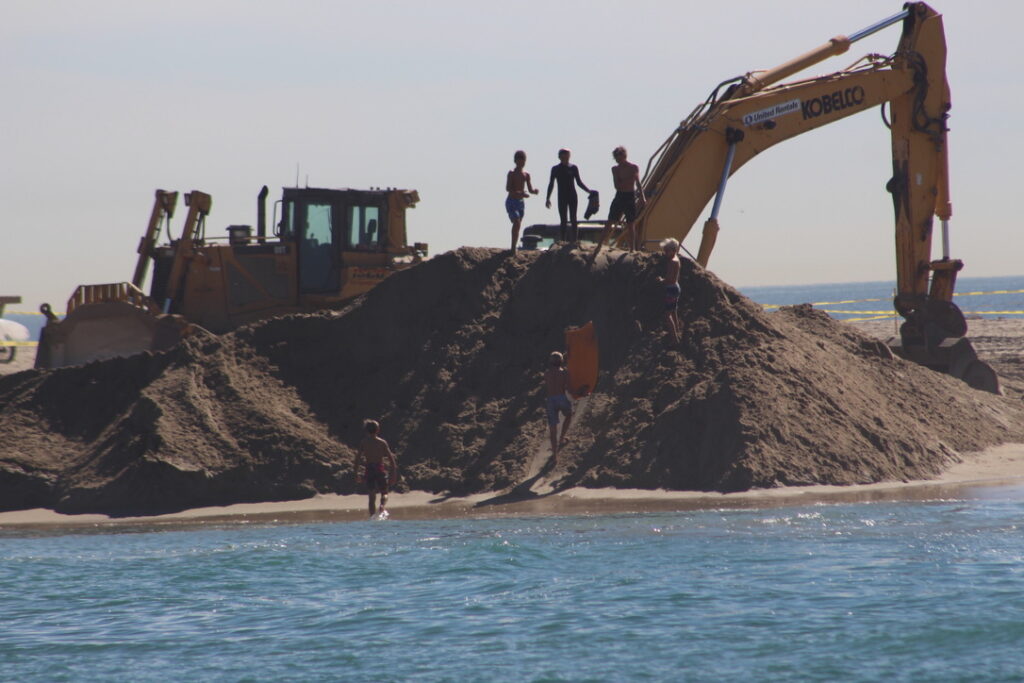
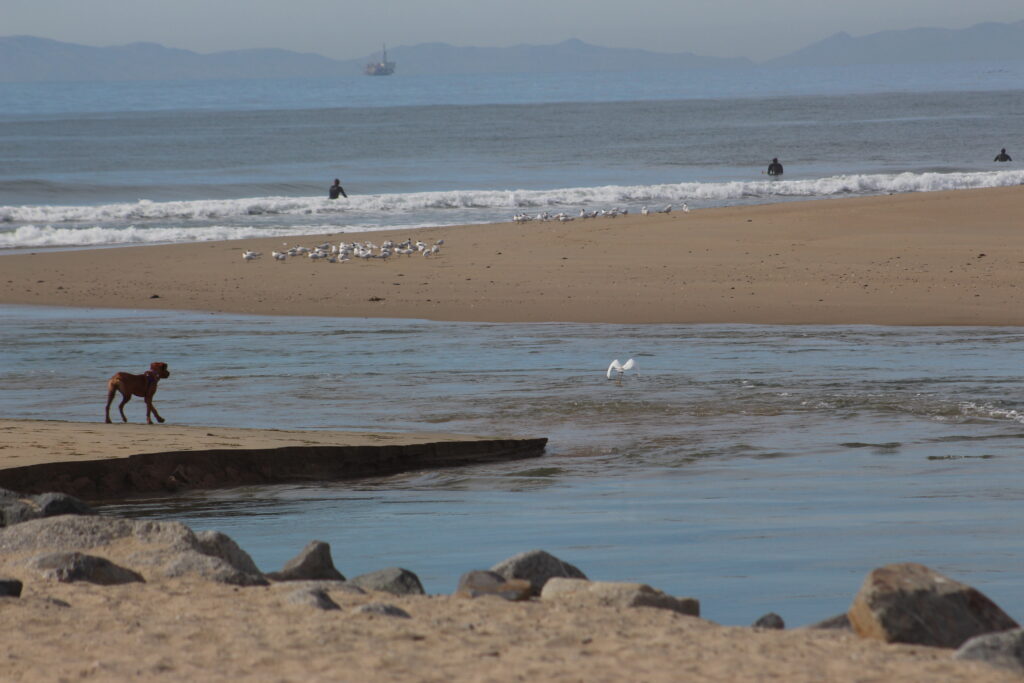
Photo Credit: Christina Giudice, Program Assistant
Land Management Confusion
Flood Control is not the only agency to blame for rampant and illegal dog activity at the river mouth. This 13.2-acre parcel of land is co-managed by three other governmental agencies: the California State Lands Commission, California State Parks, and the City of Newport Beach.
Each agency manages different parts of the river mouth with contradicting restrictions and regulations. The fragmented ownership has been a huge cause for confusion among dog owners, fishers, and other beachgoers. The map below shows what each agency manages.
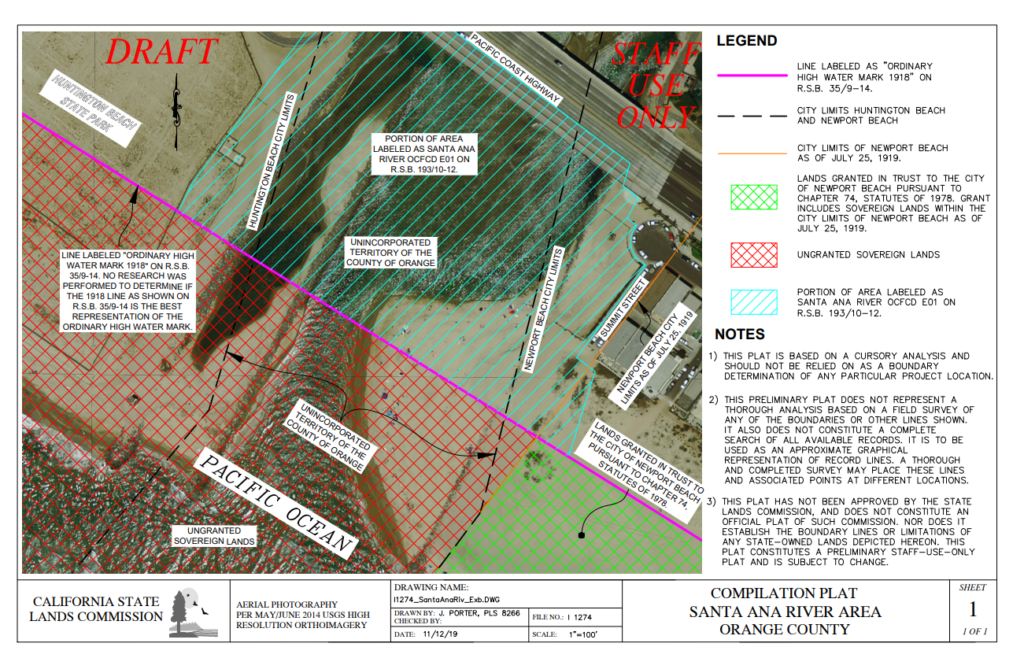
Bird Flushing Events
Many of the river mouth’s shorebirds have evolved to respond to threats, whether it be rising seas or predators, by fleeing and abandoning their nests and chicks. When a dog or human chases off a bird or group of birds resting on the sand, this is known as a flushing event.
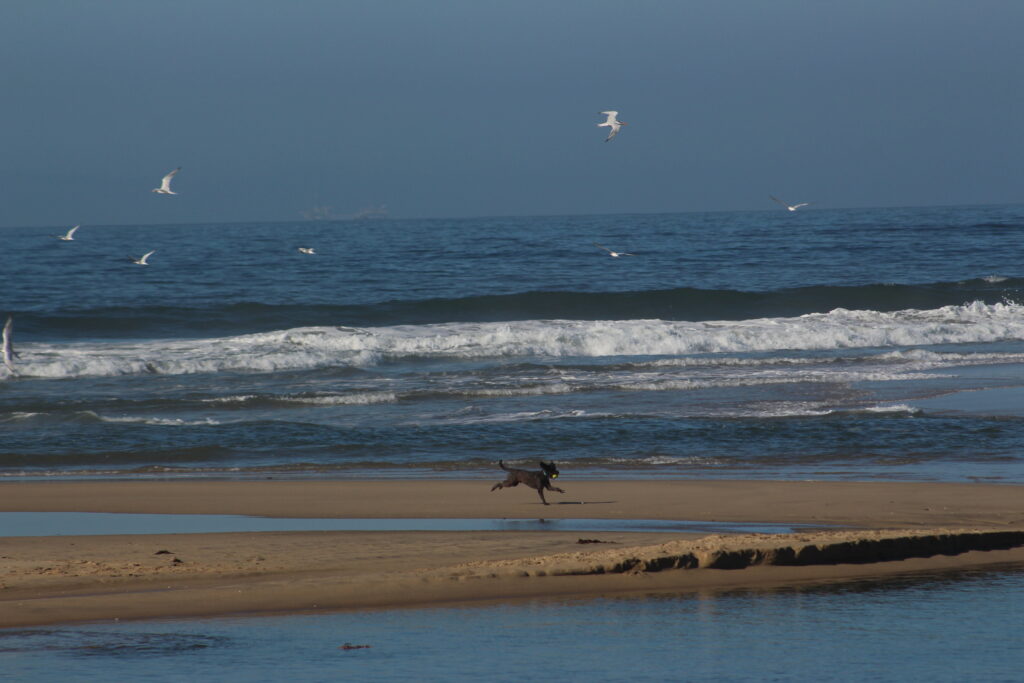
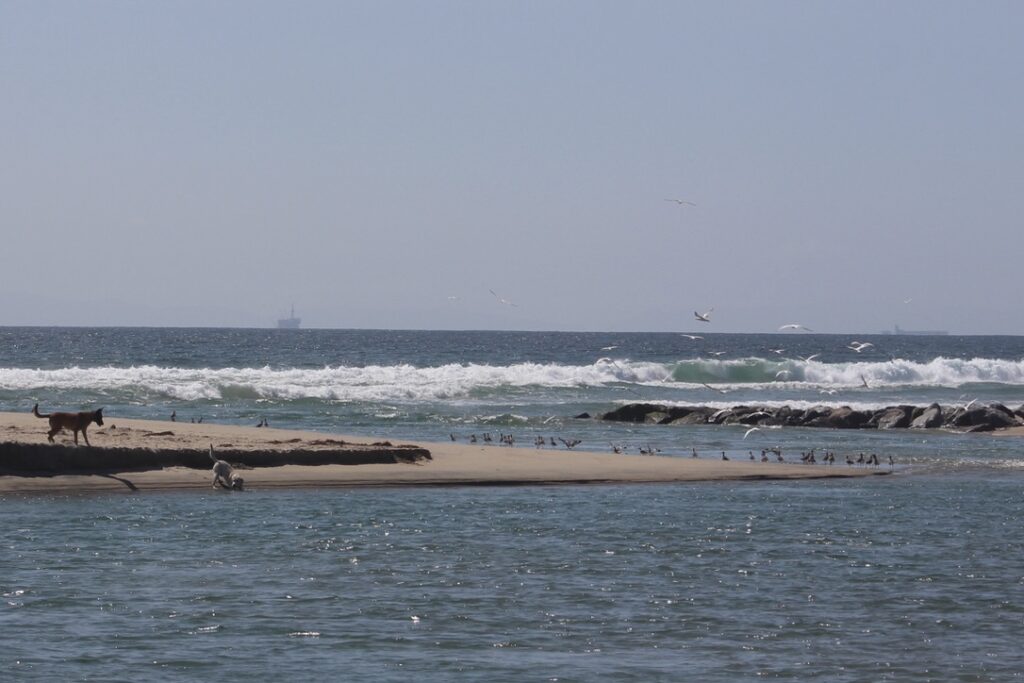
Photo Credit: Christina Giudice, Program Assistant
Our team takes note of every flushing event we witness during our surveys. In October and November of 2023, we noted a total of 32 flushing events over 224 surveys. Most of these flushing events occurred in Flood Control and State Lands Commission jurisdiction.
Federally Protected Birds
Two federally protected birds, the California Least Tern and Western Snowy Plover, call the river mouth home. There have been no Least Tern sightings this fall since they only nest in the California State Parks reserve near the river mouth for spring and summer and migrate to South America for the winter.
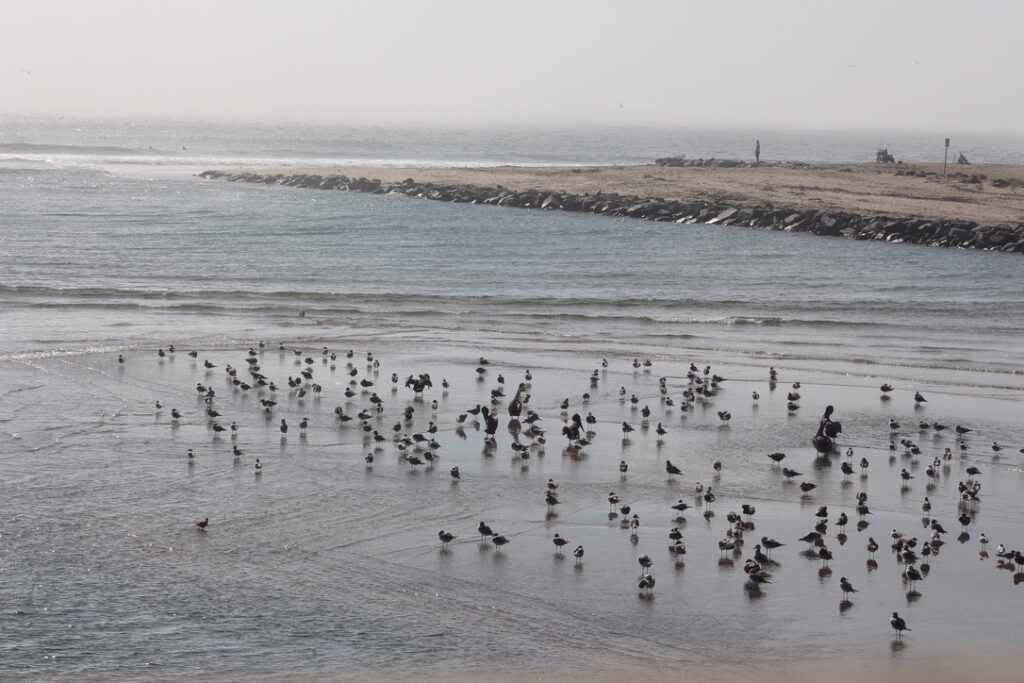
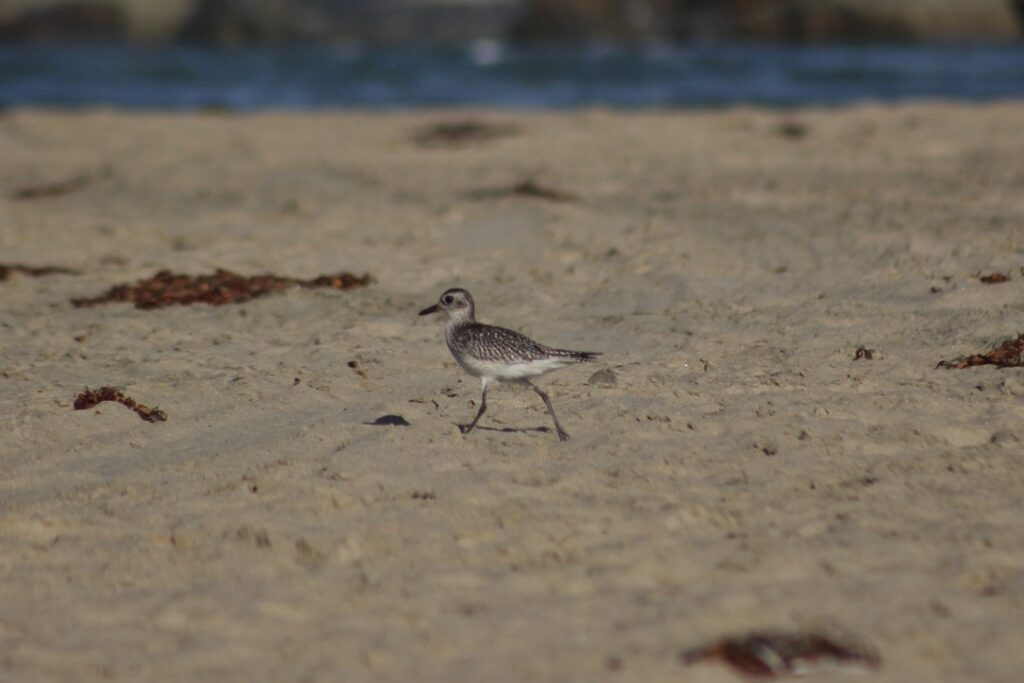
Photo Credit: Christina Giudice, Program Assistant
By contrast, Western Snowy Plovers are year-round Orange County residents. From spring to mid-fall, Plovers typically nest in the reserves located along the coast, one of which is in Huntington State Beach. In the winter, they stay close to their coastal habitats to rest and build up fat reserves, so it is important they are not disturbed during this time.
Enjoying the River Mouth Responsibly
It’s up to all of us to responsibly enjoy the Santa Ana River Mouth so this coastal ecosystem can thrive! As a reminder, dogs are only allowed on the City of Newport side of the river mouth before 10:00 a.m. and after 4:30 p.m. They are not allowed in the channel or on Huntington State Beach at any time.
Let’s respect our wildlife and keep the Santa Ana River Mouth a safe place for birds to nest and forage to help the survival and reproduction of their species. We will continue to do weekly outreach and research of the Santa Ana River Mouth to monitor the health and safety of this vital ecosystem.
Interested in learning more or volunteering for our monitoring project? Click the link below!



